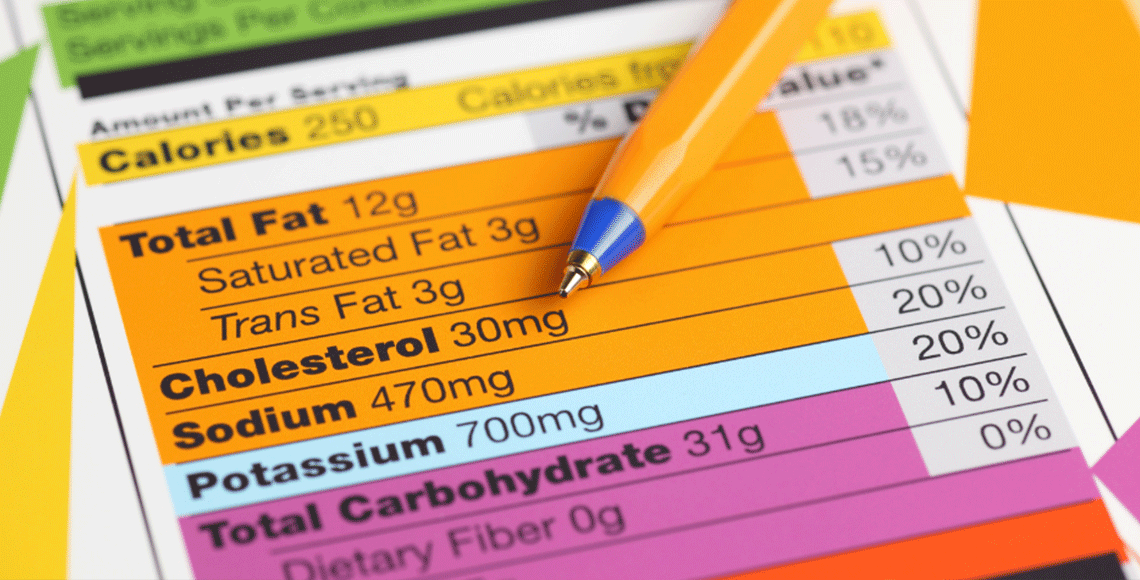How to Read the Nutrition Label
When you’re trying to follow a healthy eating plan, nutrition labels can be your roadmap, helping you decide what you should eat and what to stay away from. But although they give valuable information, the nutritional facts panel can also be confusing and hard to understand. To help, here are some tips on how to read food labels and what the different components mean.
Serving size: A serving size is a standardized amount of food. It can be used on a nutrition facts panel to present quantities of food people typically consume, or recommended quantity amounts. Serving size is not to be confused with portion size, which is the amount of food you choose to eat. 1
Calories: Calories are units of energy in the foods and beverages we consume. Most weight loss eating plans focus on the number of calories you eat. 2
Fat: Fat is the major storage form of energy in your body. Fat is a macronutrient, so it’s important to pay attention to your fat intake if you are tracking macros. Fats from foods come in different forms, including saturated, monounsaturated, and polyunsaturated. If you’re following a healthy eating plan, keep your fat consumption to no more than 25 to 35 percent of your calories—equal to about 80 grams of fat per day if you’re eating 2,000 calories. 3
Cholesterol: A fat-like, waxy substance found in your cells. Your body makes cholesterol, and it also comes from some foods, such as meats, cheeses, eggs, and shrimp. 4
Sodium: Sodium is a mineral found in some foods, especially foods that are processed. As part of a healthy eating plan, the recommendation is to stay under 1,500 milligrams of sodium per day. 5
Total carbs: Carbohydrates are macronutrients. Total carbohydrates on a nutrition facts panel refer to all types of carbs found in a food or beverage, including sugars, starches, and dietary fiber. 6
Dietary fiber (not always shown on nutrition labels): There are two types of fiber—soluble fiber and insoluble fiber. Most plant foods contain both kinds. Insoluble fiber binds with water in the digestive track and helps move waste products through. A food is considered high in fiber if it contains 5 grams or more per serving. 7
Sugars: The nutrition facts label now breaks down “total sugars” and “added sugars.” A food with 5 percent of the daily value of added sugars is considered low in sugar. A food with 20 percent or more of added sugars is considered high in sugar. 8
Protein: Proteins are chains of amino acids. Your body needs protein to help make and repair cells. You can find protein in foods such as milk, fish, eggs, meats, beans, soy, nuts, legumes, and some grains. Proteins are a macronutrient, so it’s particularly important to pay attention to your intake if you are tracking macros. 9
If you are following a weight loss eating plan or just want to make sure you’re eating healthy, the nutrition facts panel is a useful guide. Food companies want to sell their products, so some of the marketing can be misleading. The nutrition label gives the facts about nutritional components you need to know.
If you find counting macros for weight loss overwhelming, try the Curves Nutrition and Weight Management program. As a Curves Nutrition and Weight Management Program member, you get access to a Curves Coach who can keep you motivated and on track with your weight loss eating plan.
If you’re looking to get started on your nutrition journey, get started with Curves Nutrition & Weight Management Program today! For more information on Curves and the Curves Circuit, visit ‘Why Curves’ or find your local Curves club here and speak with a Curves Coach about starting your fitness journey today!
Sources:
- Serving Size vs Portion Size Is There a Difference (eatright.org)
- Calories: Requirements, health needs, and function (medicalnewstoday.com)
- Definition: Fats (for Parents) – Nemours KidsHealth, Fat and Calories: The Difference & Recommended Intake (clevelandclinic.org)
- Cholesterol | MedlinePlus
- Is Sodium the Same Thing as Salt? (eatright.org)
- What Are the Definitions of Total Carbohydrates & Other Carbohydrates? (sfgate.com)
- Nutrition Facts Label: Dietary Fiber (washtenaw.org)
- Added Sugar | The Nutrition Source | Harvard T.H. Chan School of Public Health
- Protein in diet: MedlinePlus Medical Encyclopedia






